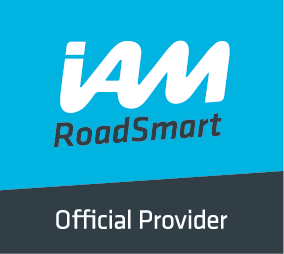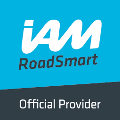Driving Tips from the St. Helens Group
Read our useful driving tips provided by Mark Farnworth, Group Vice-President or from other Group members where stated.
Browse by topic (click to view and then press back arrow)
ABS, Books, 'Automatic' Gearboxes, Dual carriageways, Country driving, Eco driving, Handbrake, Horses, Motorway driving, Observation, Overtaking, Roundabouts, Signalling, Spoken thought, System of Car Control, Terminology, Town Driving, Traffic lights, Vehicle balance
Advanced driving terminology
Terminology is used in all specialised activities, advanced driving being no exception. Within our Group we try to keep terminology to a minimum and when used, the 'giver' should be certain that the 'receiver' understands. Described below are the meanings of a few of the more technical words and phrases we use within the St Helens & District Group.
The SYSTEM: The System of Car Control is a procedure for dealing with all the actual and potential hazards on a road, as and when they arise. Hazards include physical features such as corners/roundabouts, the movement of other road users and weather/road surface conditions
10-2 or 9-3 Position: These numbers describe the recommended positions for hands on a steering wheel. Imagine the steering wheel as a clock, the hands for straight driving being placed at these clock positions. A tall person will probably feel most comfortable with their hands in the 10-2 position, whilst a small person will probably adopt 9-3.
Ship's Steering: A Fault. This is when the driver's hands appear to be 'glued' to the steering wheel in the 10-2 or 9-3 position. Steering movement is accomplished by keeping each hand fixed in its respective position and turning the wheel. The effect is similar to a steam boat captain maneuvering his boat down a river. Relatively minor steering movements by this method are acceptable and would not be classed as Ship's Steering.
Maintaining Progress: Drive to the speed limit of the road if it is safe to do so whilst making full use of available, legal road space. Don't break speed limits. KEEP YOUR SPEED UP WHEN SAFE AND BE DISCIPLINED.
Hazard procedure: This refers to the five phases of the System i.e. Information, Position, Speed, Gear and Acceleration. The Information Phase is used throughout and involves TAKING information from the road and other road users, USING the information received to form a driving plan and GIVING information to other road users about your plans.
Overlapping: A Fault. This occurs when two or more phases of the System are carried out at the same time. Overlapping situations include braking whilst changing position or changing gear whilst braking.
Secondary Braking: A Fault. This occurs when the foot brake is applied twice for a particular hazard. According to the SYSTEM, braking should be considered before a gear is selected. Secondary braking occurs when the original braking is too late and/or too light. The hazard is therefore approached too fast, regardless of whether a lower gear had been selected. The driver has to apply the brakes a second time (usually hurriedly) so that the hazard can be approached safely.
The limit point of observation: As you approach a bend you will see the road disappearing to the left or right. At the point where the road disappears, pick out one feature on each side of the road - as seen from your vantage point. As you get nearer to the bend, these two features will appear to get wider apart. The slower they separate, the tighter the bend. The faster they separate, the more open is the bend.
By Mark Farnworth
Disclaimer: Driving is never a black and white activity, but full of grey areas, therefore neither I nor my fellow Observers in the St Helens & District Group of Advanced Motorists are liable for any consequences you may experience as a result of reading our advice. You are the driver. You should be in control of your vehicle at all times.

